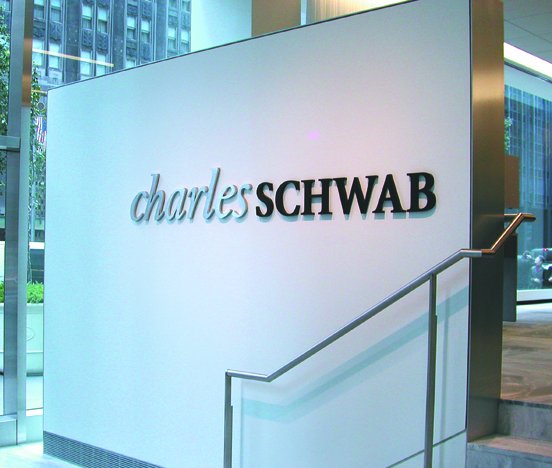The company Schwab has faced diverse threats and opportunities within its life. The first one was in 1975 when the government deregulated the brokerage commissions, permitting the companies to change their strategies on how they competed increasing the rivalry of the existing companies or the potentially new ones (Schilling, 2008). Schwab took advantages of this, providing to informed customers with low-cost access secure transactions aggressively reducing the commissions (Sutherland & DuBois, 2000), for this they invented a variety of technological advances to lower the costs.
Continuing with the decade of the 90s, Schwab developed the OneSource computational program to help customers to purchase the no-load funds. Moreover, this new system provided and exceptional and powerful distribution channel for fund providers, generating a competitive advantage for the company: the strong network based on a technological infrastructure basis.
In 1996 a great disruptive innovation arrived to the market, the development of Internet, permitting the democratization of the distribution of the information and the online transactions´ expansion (Sutherland & DuBois, 2000), causing the lowering the barriers of entry to new competitors (Schilling, 2008), threating the competitive advantages of Schwab. In line with the increase in the competitiveness of the market, in 1999 the enormous full-service brokerage company Merril Lynch entered the online trading business, besides all the medium and small companies that were starting to operate.
In this stage, it seems like Schwab can be strangulated by big and small companies. To avoid this, the proposed strategy is to take advantage of the company´s technological culture and the powerful network formed by their suppliers, financial advisors, branches and customers to generate new competitive advantages (Unger, 2012) like data mining processing and the use of this analyzed information to give online advice and customized information for example.
References
Christensen, C.M. (1999). Innovation and the general manager, session 1.1 disruptive technologies: catching the wave. Boston MA: McGraw Hill Irwine.
Schilling, M.A. (2008). Strategic Management of Technological Innovation (2nd Ed). Boston, MA: McGraw Hill Irwin.
Sutherland M. & DuBois K. (2000). Charles Schwab & Co. Inc. (A): In 1999. Stanford, CA: Stanford University
Unger, B. (2012). Alliances and Partnerships as a way to add value to products and services. Lecture 4. Boston: Boston University






Leave A Comment